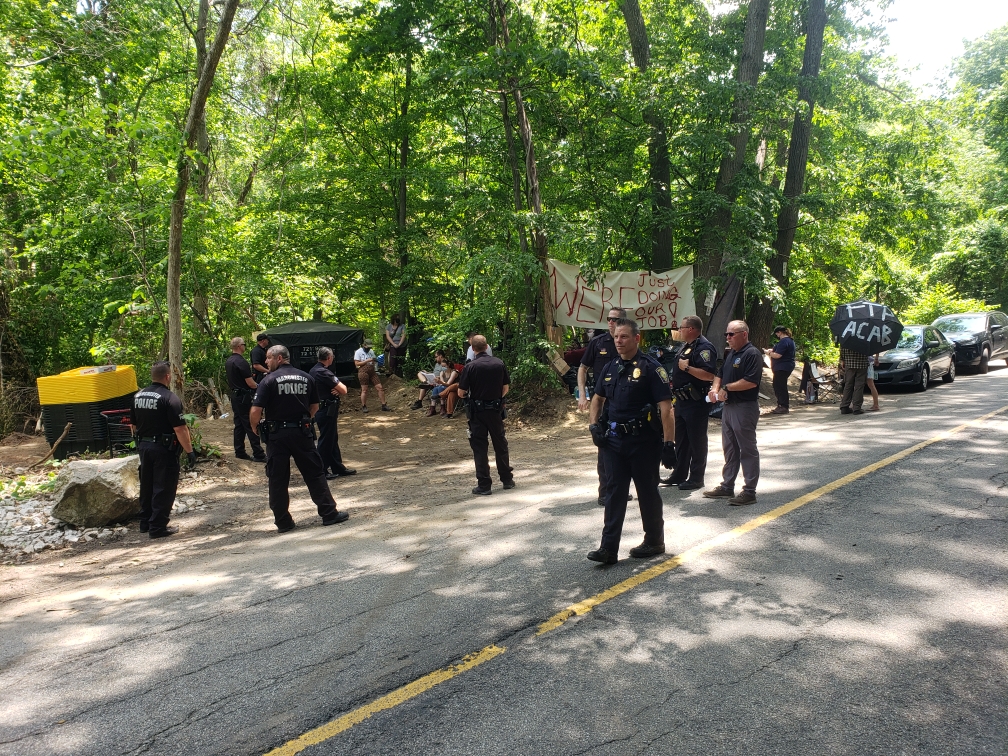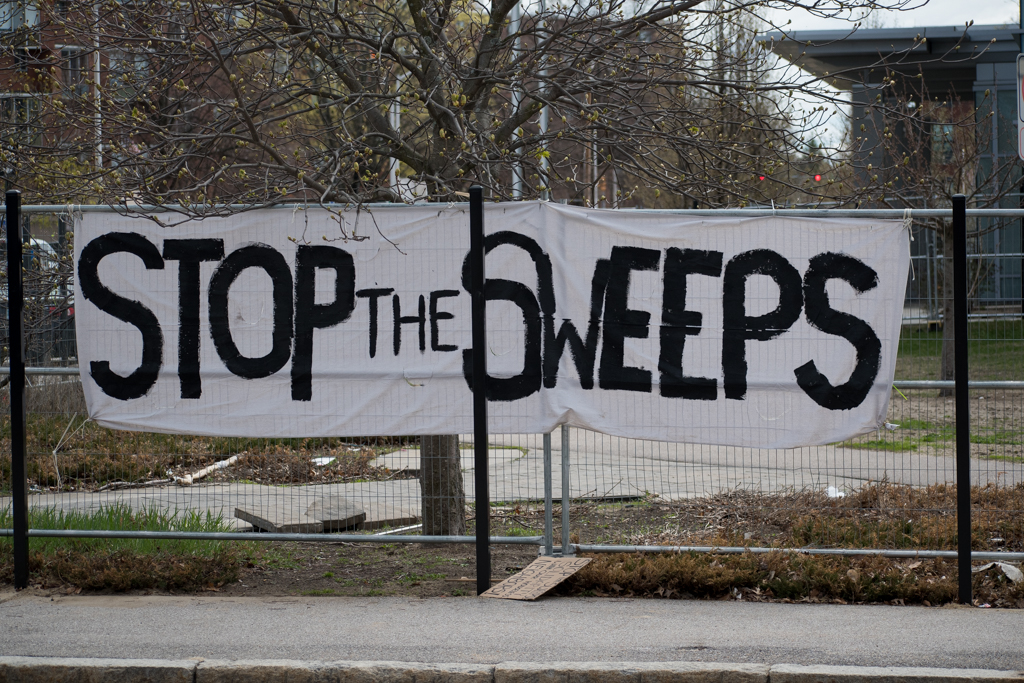
MANCHESTER, NH – The only thing that seems to have an impact on the number of homeless camps in the city is the changing of the seasons, despite several high-profile camp clearings by Manchester Police since late last year.
If anything, clearing a large camp may result in the total number of encampments to increase as people disperse and find new locations to settle, according to Matthew Bouchie, the homeless outreach coordinator for the Mental Health Center of Greater Manchester.
“It splits up and you get several smaller camps,” Bouchie said.
Of the camps outreach workers are aware of, the number has barely changed, and has in fact increased from 29 to 30 between April and May. April saw the clearing of the Firestone camp, which was on private property owned partially by the Firestone auto shop and the Pan Am railroad.
The number of encampments in November was recorded at 32, according to the monthly reports compiled by the coordinated outreach teams, which involve several nonprofit organizations including the community mental health center, Families in Transition and the city Fire Department.
Since November, the number dropped to a low of 22 in February and rose again as the months grew warmer. Outreach workers say that’s to be expected as more people take advantage of cold weather shelters during the colder months.
The effect of the last large camp to be cleared, known as the Bucket, is not yet known but Bouchie said it likely has no real impact on the number of camps. It does, however, have an impact on how effective the outreach teams are able to be, he said.
“Any time there’s a bunch of clearings, I think it’s just that the people they see the most often are us outreaching to them, so some people have expressed to us that we’re behind the clearings, or that we’re tipping the city off, but we’re not,” Bouchie said. “We’ve lost some of the trust of, not everyone, but there’s some people who don’t trust us anymore because of the clearings.”
When the outreach teams first began, it was lauded as an effective way to gain the trust of homeless residents gradually over time. That trust was instrumental in ultimately connecting people with services available to them in the community.
But Bouchie said the clearings have undermined that trust.

The monthly outreach team reports echo this. Memos in the March and April reports note an increased difficulty in getting people to report their encampment locations to outreach workers, for fear that the information will be used for future clearings.
“Some people, we don’t know where they end up,” Bouchie said.
Their fear is understandable. Before the outreach teams began a census of the homeless individuals and their encampments last summer, there was no central list identifying camp locations. But Bouchie said that list is not shared with city officials.
The Fire Department is the only city agency with access to the information. And so far, the high-profile clearings have mostly been on privately owned property, or well-known locations on city property.
After the Bucket clearing in early June, Bouchie said there were a few other smaller camps cleared by police that were on private property, and the property owners requested the city’s intervention.

The forced relocations also have a negative impact on many of the affected people’s mental health, Bouchie said, as they will often lose many of their belongings in the process and feel relatively unsafe sometimes for days while they seek out a new location to sleep.
For many, that just compounds the illness caused by past trauma.
“That definitely adds to that trauma,” Bouchie said.
So far, the process for the clearings appears to be inconsistent. Bouchie said the outreach teams are supposed to be looped in early on in the process to help notify the affected residents. And the notification period given before the clearing varies from a single day to a week and a half, though Bouchie said the city is able to give more time when dealing with its own property.
The number of active homeless individuals counted by outreach workers (within the past 30 days of each reporting period) has risen steadily, from 83 in February, 131 in March, 163 in April to 174 in May.
The overall total census of people experiencing homelessness in the Queen City has grown from 547 to 693 over the same period.







